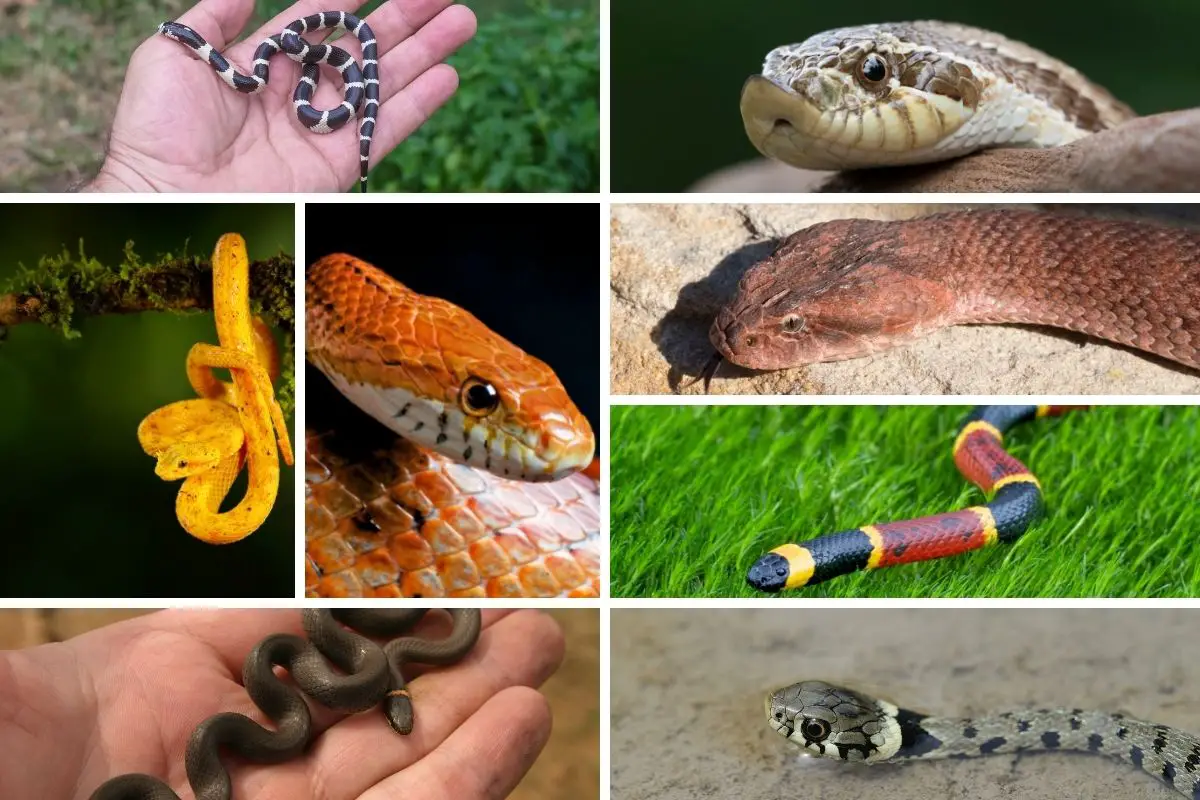If you are new to the world of pet snakes, it’s always a good idea to start with something that is easy to care for and that doesn’t require a lot of effort, money, time, or space to stay content and happy.
That’s why so many people look for small pet snakes that stay small, and luckily, there are plenty of those to choose from.
So, whether you are looking for something beginner-friendly, nonvenomous, or even venomous, there is a small snake for you.
Let’s start with the full list and break it down later; here are the best pet snakes that stay small:
- Ball Pythons
- Garter Snakes
- Water Snakes
- Rosy Boa
- Milk Snake
- King Snake
- Barbados Threadsnake
- Ringneck snake
- Western Hognose Snake
- House Snake
- Kenyan Sand Boa
- Corn Snakes
- Gopher Snake
- Bimini Blind Snakes
- Children’s Python
- California King Snake
- Scarlet King Snake
- Common Lancehead
- European Vipers
- Death Adder
- Green Snakes
- Coral Snakes
- Golden Lancehead
Most of these snakes are nonvenomous, but the last few of them are. In this article, we are going to discuss what makes each of these snakes unique and who they are best for, as long as any other interesting information you should know about the snake before you make a decision.
So, keep reading, and let’s get to it!
Contents
The 23 Best Snakes That Stay Small
Now, let’s get to why each of these small pet snakes is an excellent choice for you and how each of them is quite unique in their own way.
Keep in mind, we are starting with the nonvenomous small snakes that will stay small, and you can scroll to the venomous ones down the article if that’s what you’re interested in.
I’ll also discuss the pros and cons of owning small pet snakes at the end of the article as well, so stick around for that.
Okay, let’s start with the one you’ve probably already heard of:
Ball Pythons
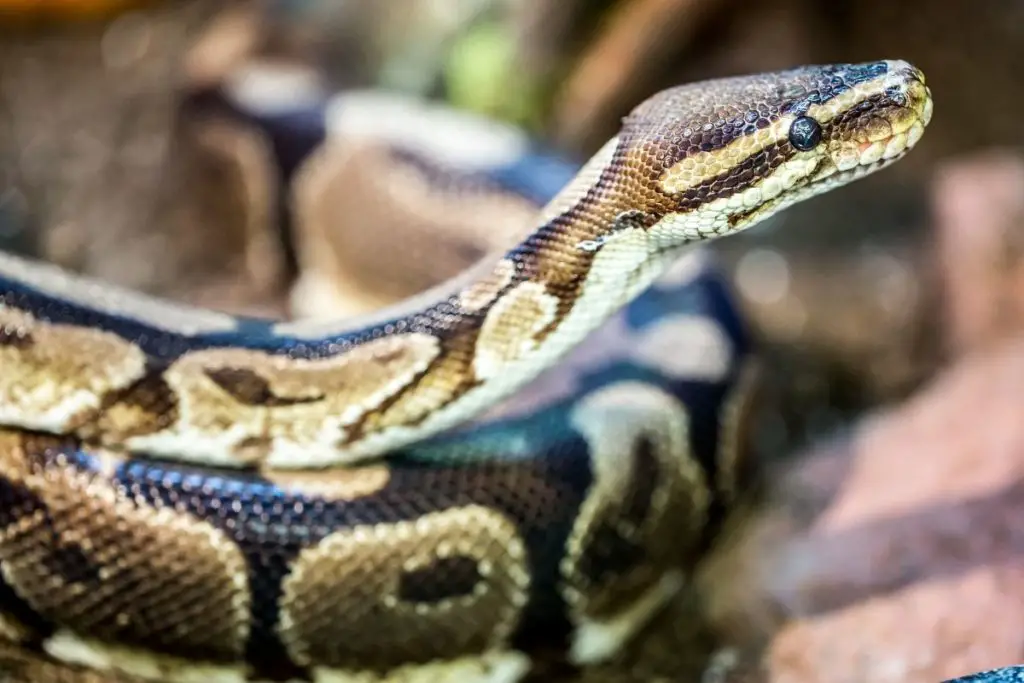
Lifespan: 15-30 years
Size: 6 feet.
Price $70
Ball pythons are one of the most popular pet snakes in the world for a reason. They are docile, easy to care for, and stay small – perfect for anyone just starting out with snake ownership.
In addition, they come in a variety of colors and patterns so you can find one that is unique to you.
The only downside to owning a ball python is that they can be a little pricey, but with a lifespan of up to 30 years, it’s well worth the investment.
Water Snakes
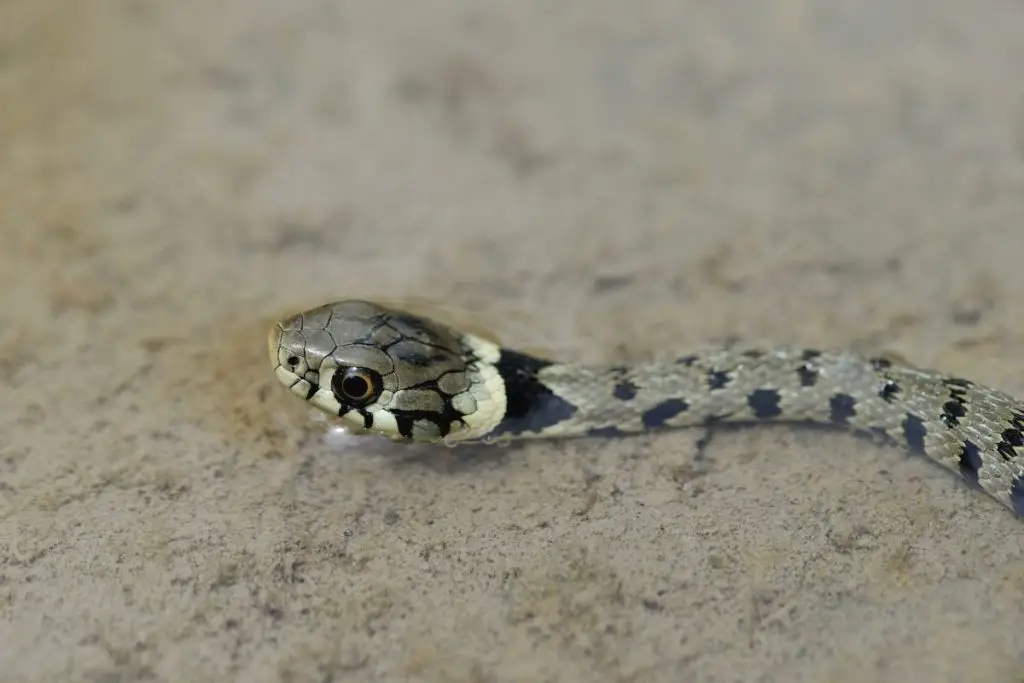
Lifespan: Up to 12 years
Size: Up to 48 inches long
Price $20-$50
Water snakes are another great pet snake that stay small and can be found in a variety of colors and patterns.
They come from North America, Central America, and South America, so they are the perfect pet for those who want something exotic.
In addition, water snakes are nonvenomous and thrive in a humid environment, so they are perfect for those who live in tropical climates.
Their lifespan is also up to 12 years, making them a great pet choice for the long term.
Garter Snakes
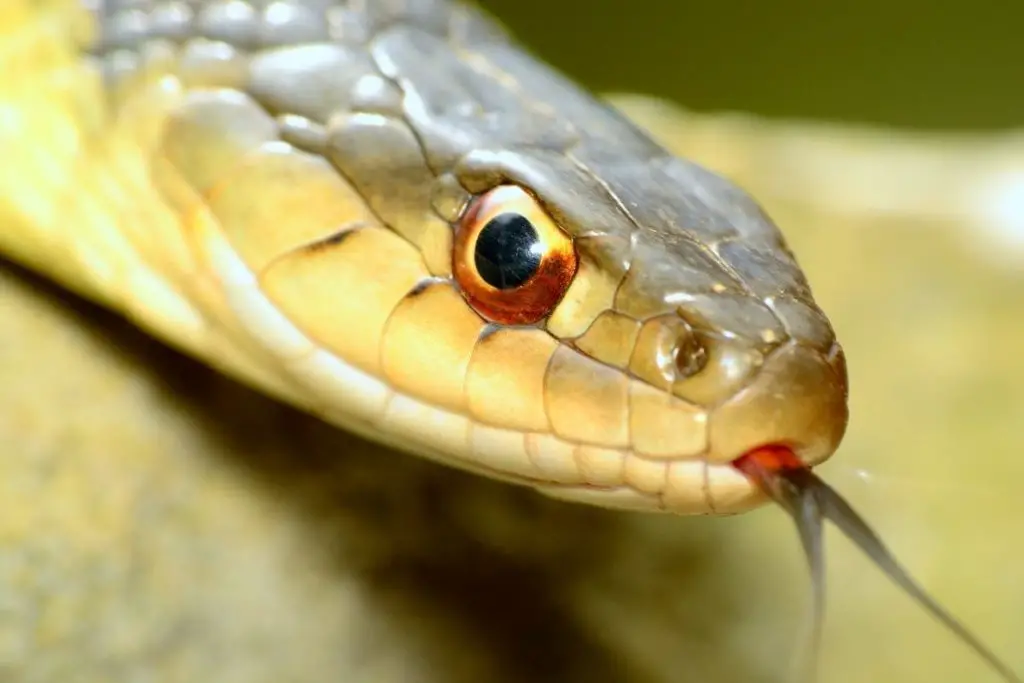
Lifespan: Up to 10 years
Size: Up to 3 feet long
Price $15-$30
Next on our list are garter snakes, which are common pet snakes that stay small.
Garter snakes come in a variety of colors and patterns, but they’re all nonvenomous so you don’t have to worry about them harming your family or pet cats/dogs while you are away from home.
In addition, garter snakes are easy to care for and only require a 20-gallon tank, making them an excellent choice for those who are tight on space.
Their lifespan is also up to 15 years, so you will have plenty of time to enjoy your pet snake. Learn more about the Garter snake in this article on how dangerous are garter snakes.
Rosy Boas

Lifespan: Up to 30 years
Size: Up to 3.6 feet long
Price $20
Rosy boas are another pet snake that stay small and are very docile.
They come from the southwestern parts of North America, so they would be perfect for those who want a pet snake to keep outside in hotter climates.
In addition, rosy boas also have an average lifespan of up to 30 years, making them a great long-term pet choice.
Rosy boas are a perfect choice for beginners because they are very low-maintenance pets that make them very easy to care for.
Milk Snake

Lifespan: 15 to 22 years
Size: 3-4 feet
Price: $80
Milk snakes are another pet snakes that stay small and are perfect for beginners.
Their average lifespan is 15 to 22 years meaning you will have plenty of time to enjoy your pet snake before it dies naturally.
Milk snakes also require very little maintenance; they only need to be fed once every week or two, and they do not need special bedding.
In addition, milk snakes can come in a variety of colors and patterns making them one of the most unique pet snake options available. Milk snakes are also nonvenomous so you don’t have to worry about your pet cats or dogs being harmed while you’re away from home.
These kinds of accidents are more popular than you think, and you can learn why dogs and snakes don’t get along well here.
King Snake
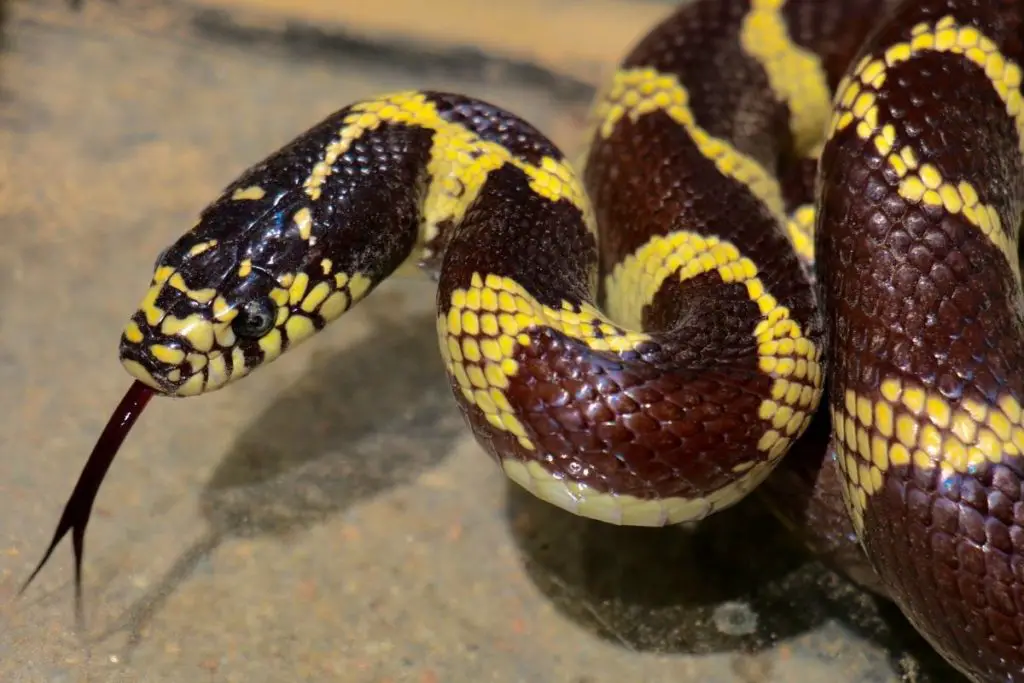
Lifespan: up to 33 years, with an average of 15 years.
Size: 3.5-4.5 feet.
Price: $60
Although their coloration varies, all black, a mix of brown and white, or black and white is typical for Kingsnakes.
Kingsnakes do not need special care and are usually low-maintenance snakes. However, you need to make sure to keep your kingsnakes on their own enclosure and you can’t keep them with other snakes, because king snakes are known to eat other snakes.
Barbados Threadsnake

Lifespan: 10 years
Size: 4 inches
Price: Varies depending on the pet store
This pet snake will quickly become your favorite.
They are very easy to care for and they don’t eat a lot, so you won’t have to clean their enclosure often.
In addition, Barbados threadsnakes can be quite social creatures if handled regularly. However, it’s important that you keep a pet snake away from overly aggressive humans as they can get stressed easily.
Threadsnakes are a great pet choice for those who have never owned a pet snake before because you don’t need to worry about feeding them or providing bedding for them since their diet consists of living insects only.
However, it’s important that you keep in mind that thread snakes are nonvenomous pet snakes and they should not be handled by children.
Corn Snake
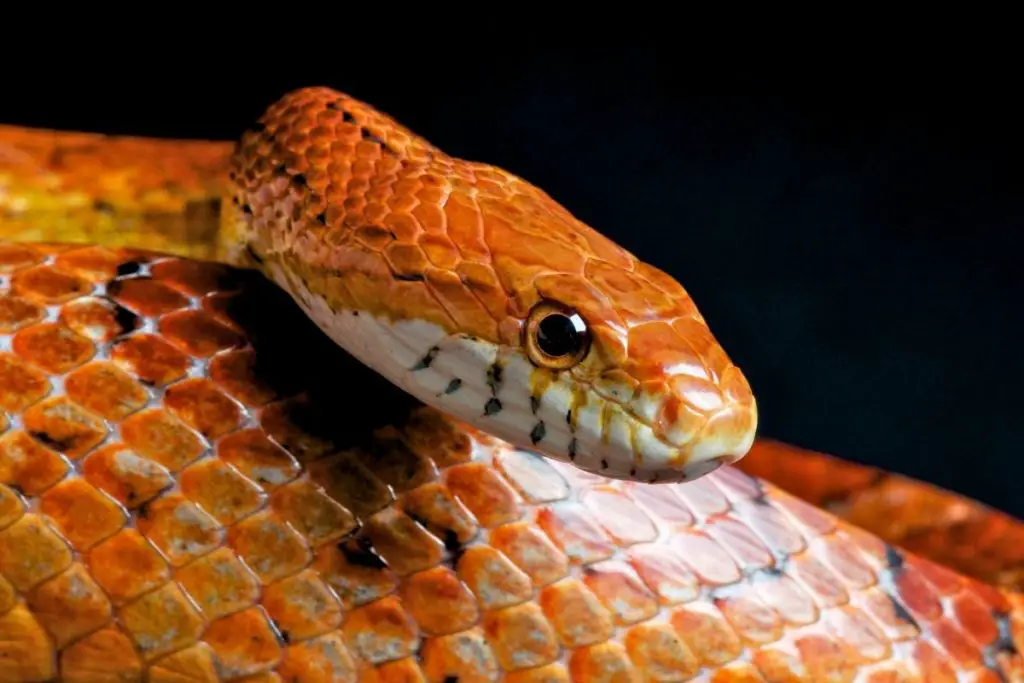
Lifespan: up to 8 years
Size: Up to five feet
Price: $80
One of the most popular pet snakes is the corn snake. Corn snakes come in a variety of colors and can be quite tame.
They are also one of the easiest pet snakes to care for, as they only need to be fed once a week and don’t require any special bedding.
In addition, corn snakes have a lifespan of up to eight years making them a short-term pet option for those who are not interested in owning pet snakes for the long term.
Corn snakes are lively, energetic little reptiles that like to explore. They can also be handled and observed as they travel around your hand. When corn snakes are under threat or irritated, they may bite, but their bite isn’t as excruciating as other snake bites.
Ringneck snake

Lifespan: up to 6 years
Size: 10 to 15 inches
Price: $30
The black or dark brown ringneck snake as a pet is one of the tiniest snake breeds. They are so small that they may be mistaken for worms. They have a distinctive orange necklace that encircles their neck, which is either black or dark brown in color.
Many people mistake small snakes for babies because of their length, which is around 15 inches. They have a diameter no thicker than that of a pencil and can consume tiny worms and invertebrates.
Western Hognose Snake
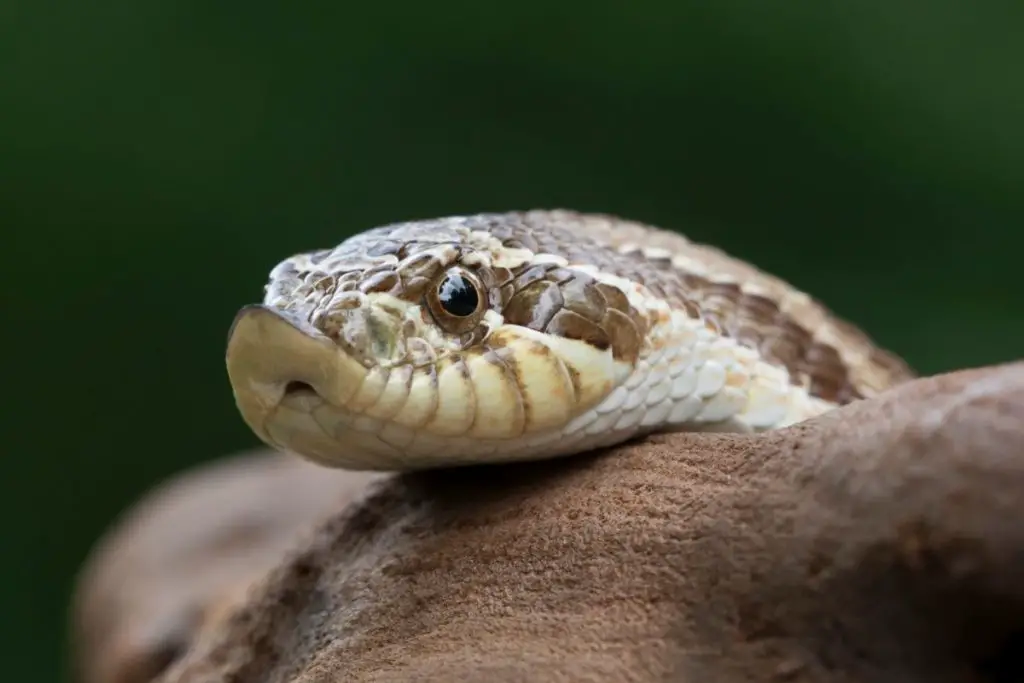
Lifespan: up to 20 years
Size: up to 3.6 feet.
Price: $250
The hog-nosed snake got its name from the animal’s nose, which resembles that of a pig. They have many hues, such as brown, tan, and yellow with olive oval markings.
They range in length from 1.4-3.6 feet and have a lifespan of 15-20 years. They may be handled, and they don’t require much care. Although they aren’t as eye-catching as ball pythons, it’s enjoyable to watch them feed.
However, they are quite expensive to get, but they live for a long time so they can be considered a good investment over the long run.
House Snake
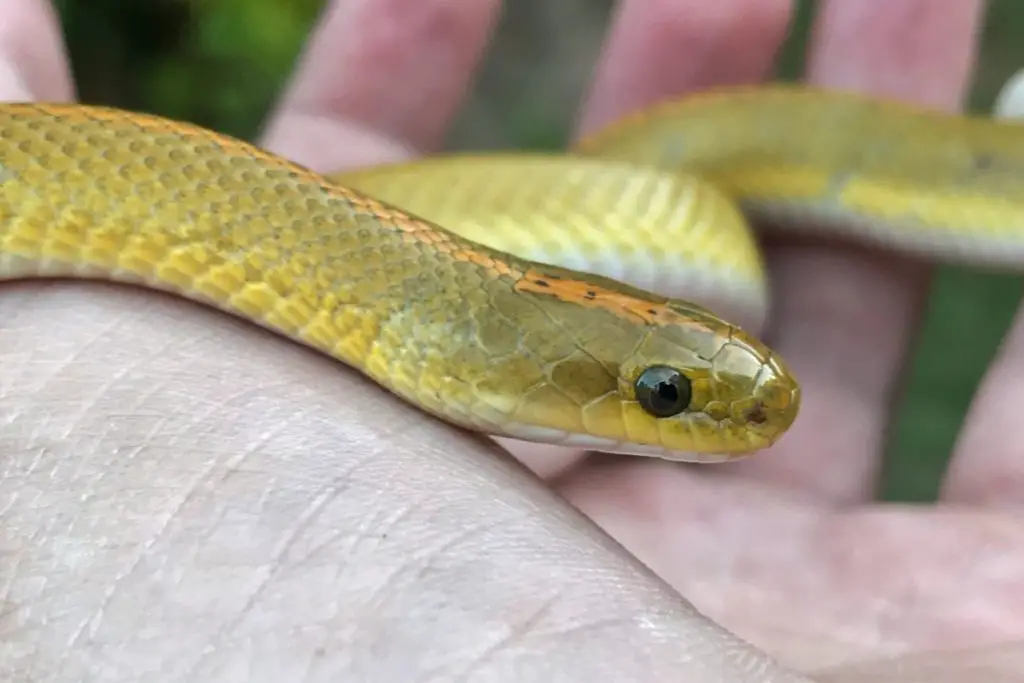
Lifespan: up to 20 years
Size: between 24 and 30 inches
Price: $180
The house snake is a pet that doesn’t require much maintenance. They come in different colors, such as black, white, and green.
They are easy to feed and don’t need any specific bedding. In addition, they can live up to 20 years if taken care of properly.
Since they’re not venomous, these pet snakes can be handled by children as long as they’re supervised.
However, pet house snakes are not ideal for those who aren’t able to travel since they require a lot of attention and care.
Kenyan Sand Boa
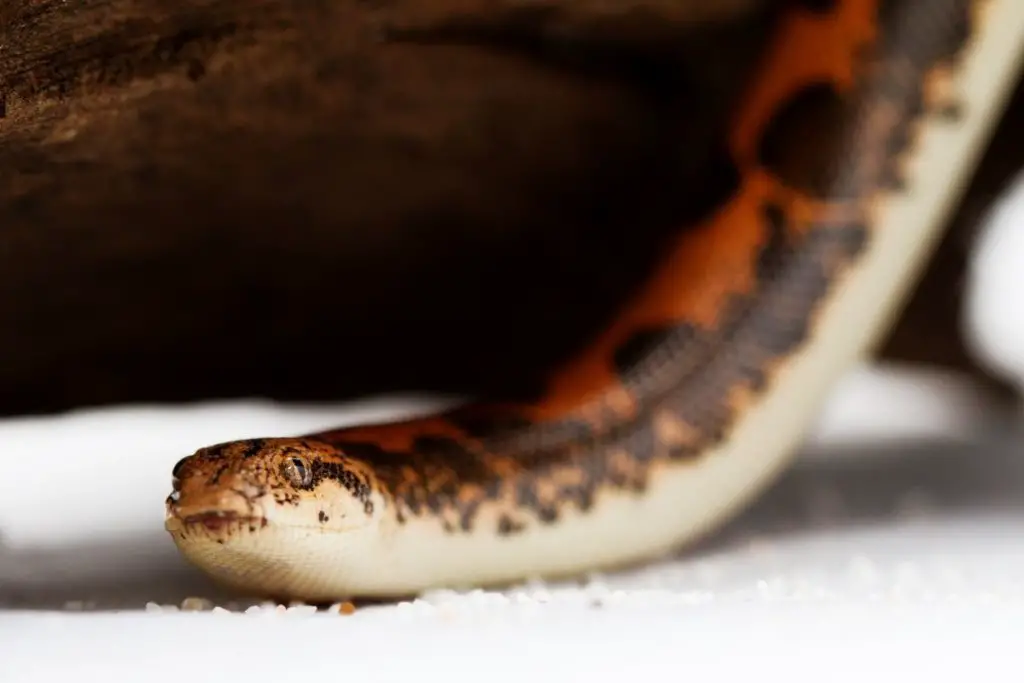
Lifespan: 15 years
Size: up to 2 feet long.
Price: $120
The Kenyan sand boa pet is a hardy snake that doesn’t require too much maintenance. They eat small meals and don’t need any special bedding, either.
These pet snakes can be handled by adults and children as long as they’re supervised during the first few weeks of handling sessions to make sure that the pet snake gets acclimated to its surroundings.
The colorful Kenyan sand boa is also small, and you may keep them in a tank as little as 10 gallons.
They have a calm personality, but some of them may have a flighty demeanor
Gopher Snakes

Lifespan: 15-20 years
Size: Up to four feet long
Price $30-$50
The Eastern Milk Snake (Lampropeltis triangulum) is a lesser-known snake species that doesn’t make it any less of a joy to keep! Gophers are available in pet stores and are relatively inexpensive snakes. They start at around $50 and grow to 4 or 5 feet long, but they’re laid back and even-tempered.
They’re also a good pet snake for beginners because they don’t eat live prey and are easy to feed. They generally only require one mouse every three weeks, which is much less frequent than other pet snakes! The Eastern Milk Snake can go up to 20 years in captivity, so it’s perfect for those who want something term to enjoy and keep.
Bimini Blind Snakes
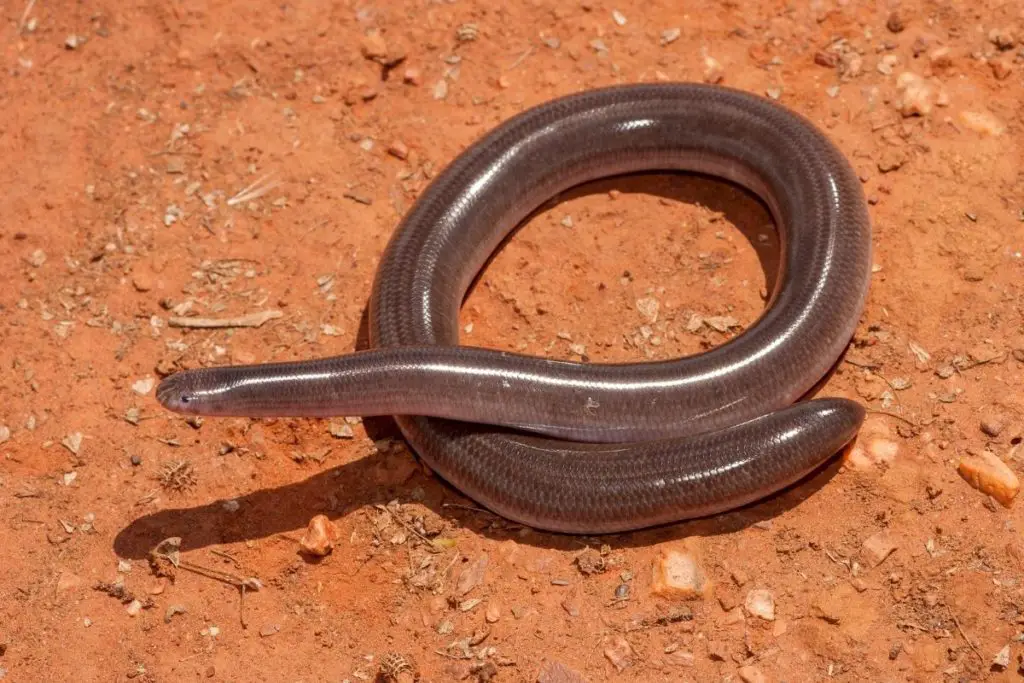
Lifespan: unknown
Size: up to 6 inches
Price: varies
The bimini or Brahminy blind snakes are fascinating snakes. They are all females, incredibly small, and are often mistaken as earthworms.
They are called blind snakes but they are not actually blind, they have two small dots on the front of their heads that are actually their eyes, although they are very difficult to notice.
Getting a Bimini blind snake may be challenging, and finding one in their enclosure can take some practice, but they are quite easy to care for and are very low-maintenance.
Children’s Python
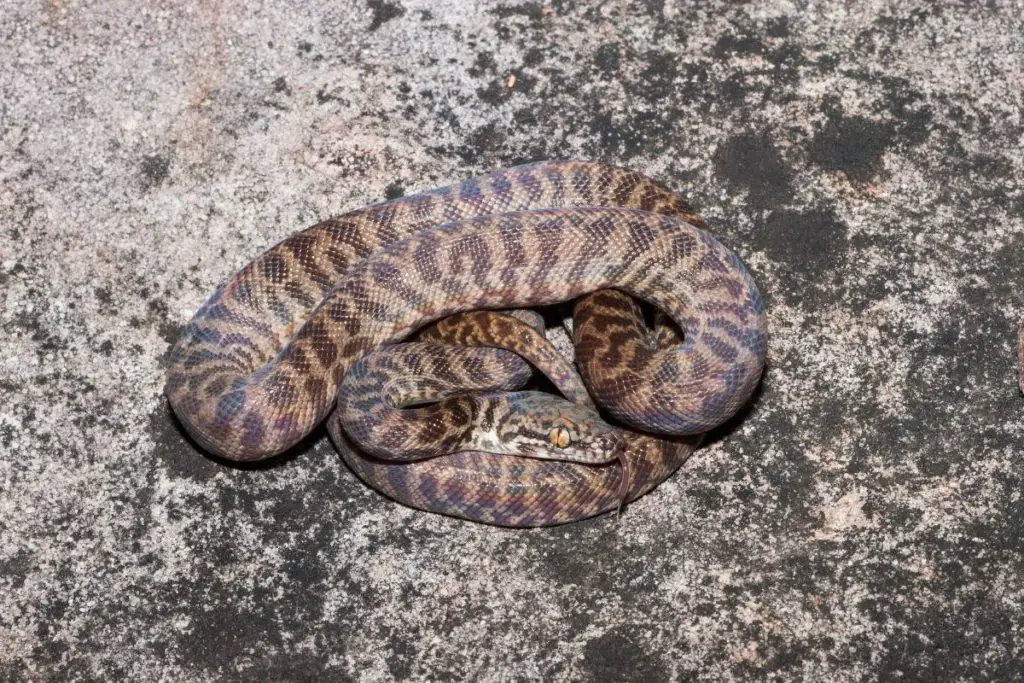
Lifespan: Up to 30 years
Size: 3-5 feet.
Price: $180-200
The children’s python is a little Australian snake that may be kept as a pet. Although youngsters’ python are nippy, they are quite docile.
If you’re thinking about getting one as a pet, go for juvenile or adult specimens; this is because the young ones are difficult to feed for beginners.
California King Snake
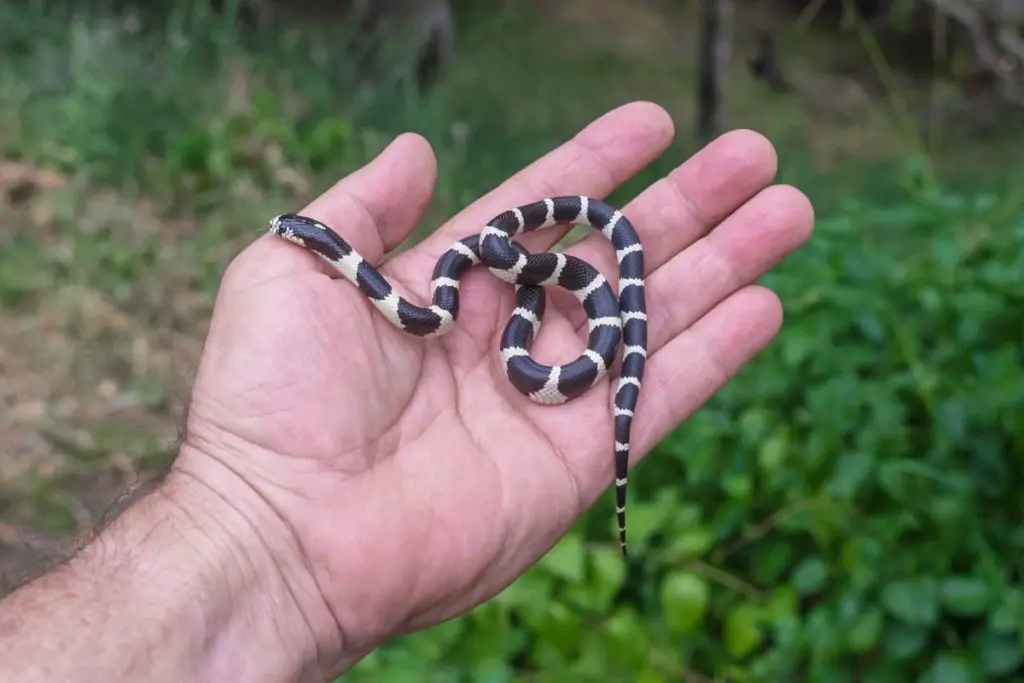
Lifespan: 20 years
Size: up to 40 inches
Price: varies
The California kingsnake is a non-venomous snake that you may keep as a pet.
The California King snake is oviparous, or egg laying. In the case of the California King snake, which has an average of 8 eggs that are incubated for up to 6 weeks, it is oviparous.
The California king snake also has many distinct subspecies, each with its own color and pattern variations. The California kingsnake is one of the most frequently kept snakes as pets.
The California King Snake is not considered endangered and can live for 20 years.
Scarlet King Snake
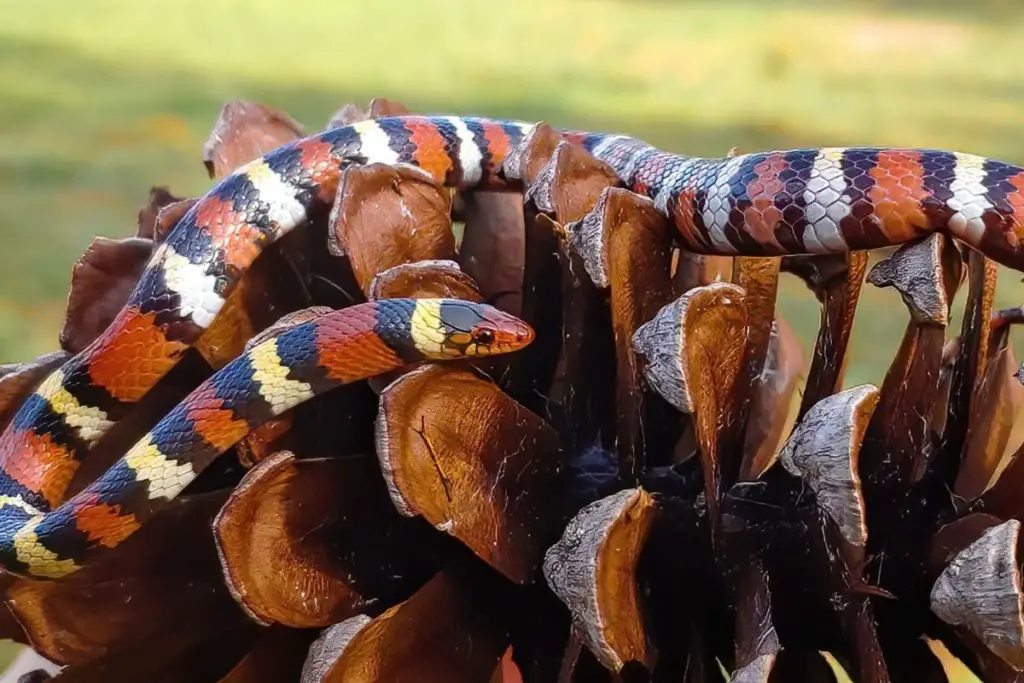
Lifespan: up to 15 years
Size: up to 20 inches
Price: varies
Keep separate king snakes since they are notorious for consuming other snakes. They’re also a fantastic pet, although they can live 10-15 years and grow to be 3-4 feet in adulthood. The striped or banded California king snake is the most popular variety, but there are several others to select from!
Venomous Small Pet Snakes That Stay Small
Common Lancehead

Lifespan: up to 9 years
Size: up to 6 feet
Price: unknown
If you want a pet snake that is venomous, the common lancehead is an excellent option. This South American species grows to around six feet long but are typically smaller in captivity. They’re aggressive and require a lot of specialized care, so they aren’t recommended for beginners.
The common lancehead can live up to nine years in captivity if well cared for, but be aware that they are one of the most expensive pet snakes on the market.
European Vipers
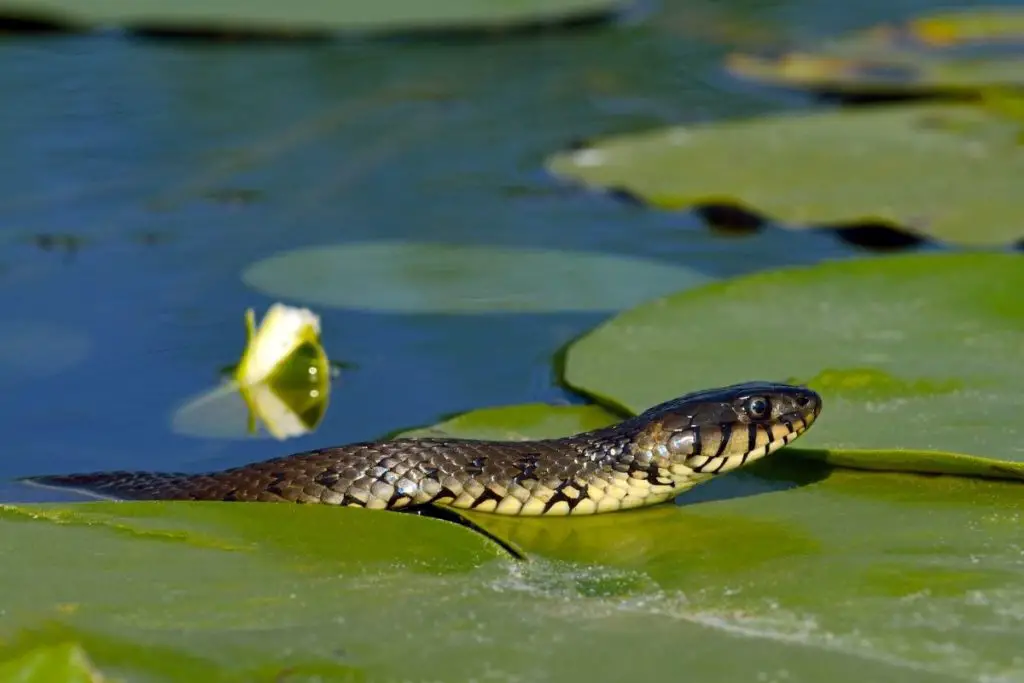
Lifespan: 10 to 15 years
Size: 33 inches
Price: varies
The European vipers are some of the most venomous pet snakes that you can find.
They generally only grow to around 33 inches but they do stay small, despite their name! They also make fantastic pets, as long as you research them thoroughly first and have a proper setup for them.
They’re also known as the European adders and come in a variety of hues, ranging from gray, brownish-red, black, cream, white to pale yellow. It has a V-shaped head and eyes that are half shielded by scales, giving it an eyelid effect.
Death Adder
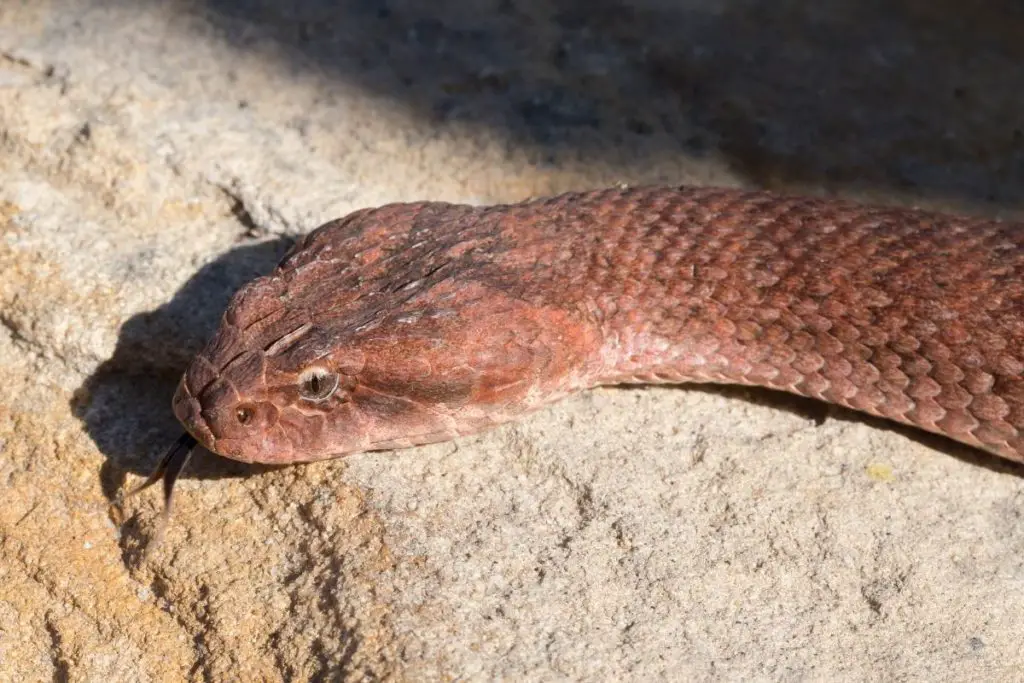
Lifespan: 15 to 20 years
Size: up to 3.3 feet.
Price: $200
With a broad triangular head, short, squat bodies, and tapering tails, death adders are easy to identify. They’re also one of the most venomous snakes in the world and should only be kept by experienced snake owners.
Death adders can live for up to 20 years in captivity, but they are expensive pet snakes. They typically grow to around three-and-a-half feet long, but some have been known to reach six feet in length.
They are nocturnal snakes, and they also have one of the longest fangs of any Australian Snake.
Green Snakes
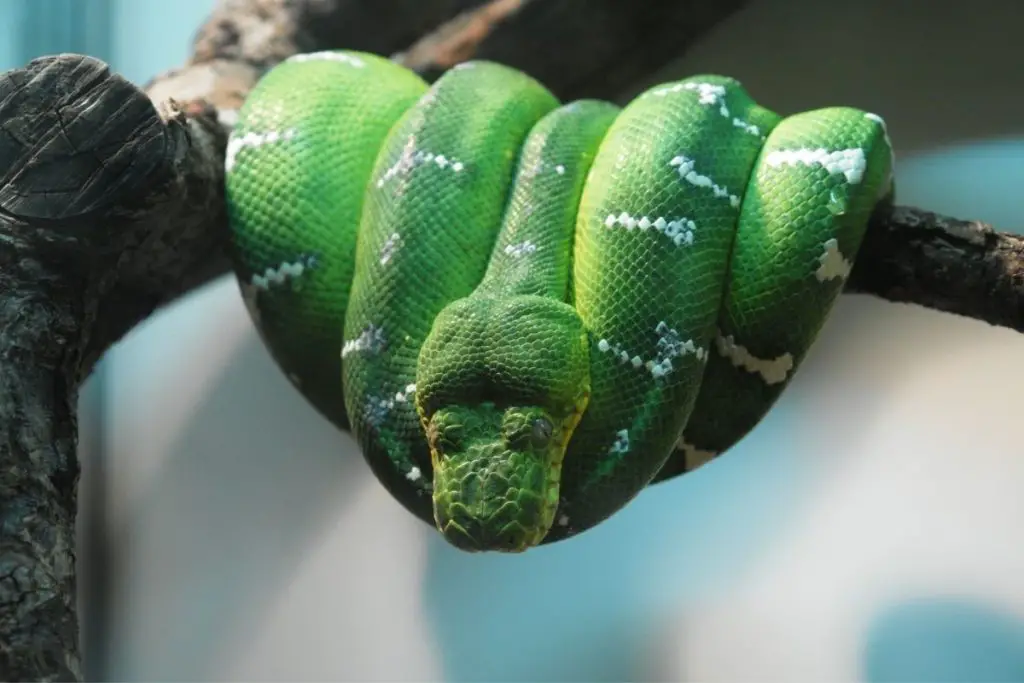
Lifespan: 15 years
Size: 14-20 inches
Price: $100
Green snakes are one of the arboreal snake species that keep their size throughout their lives. There are two distinct varieties of green snakes that may be kept as pets, known as the smooth green snake and the rough green snake.
They’re both good starter pets that can survive on an insect-based diet. Green snakes aren’t aggressive by nature, but they will defend themselves if necessary.
Coral Snakes
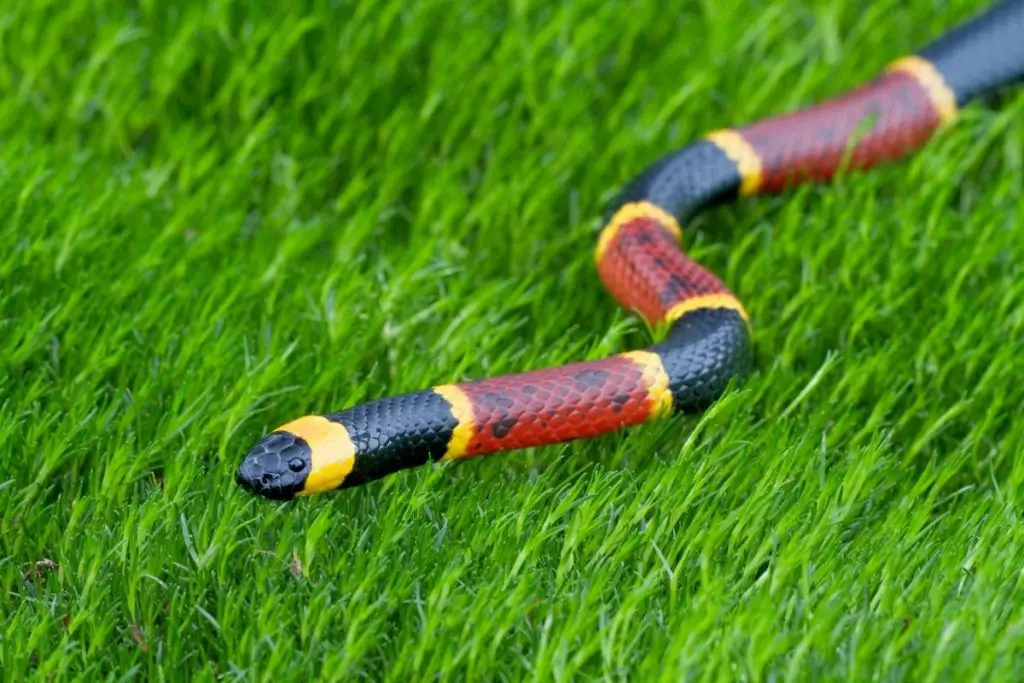
Lifespan: 7 years
Size: up to 20 inches
Price: $500
The coral snake is a venomous pet snake that should only be kept by experienced snake keepers.
They come in a variety of colors, including red, yellow, and black. The red and yellow banding pattern is the best way to identify them.
Coral snakes are short but can grow up to 20 inches long. They have a lifespan of about seven years and should be kept in an enclosure that is at least 20 gallons. Coral snakes are one of the most expensive pet snakes you can get.
Golden Lancehead
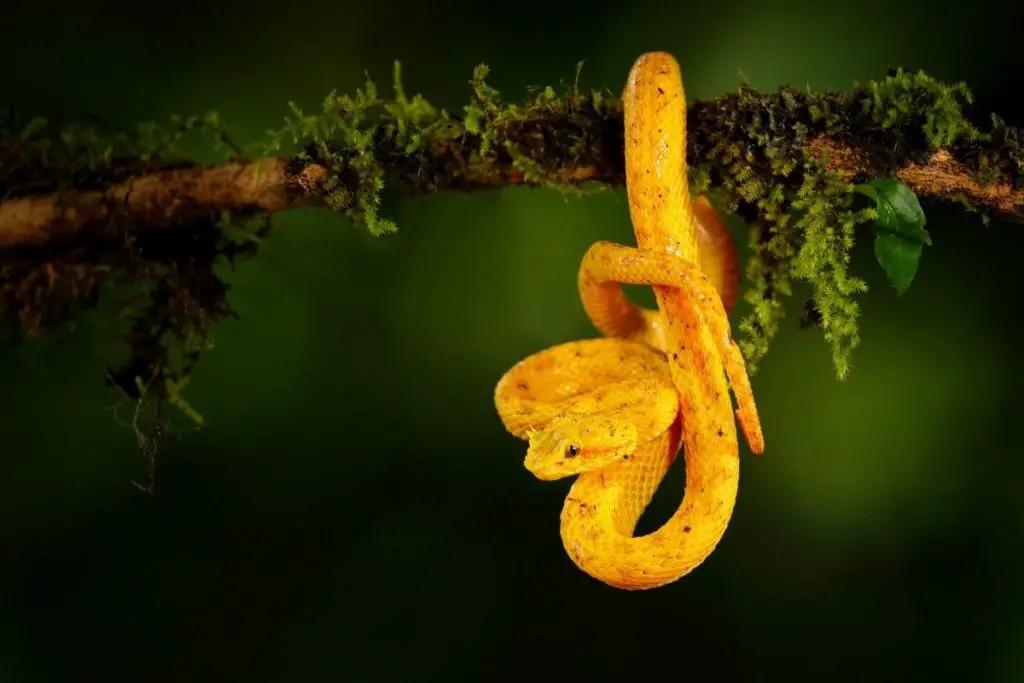
Lifespan: Up to 8-9 years
Size: 28 inches
Price: More than $10,000
Golden lanceheads are a pet snake that can live up to eight or nine years in captivity. This South American species is one of the most venomous pet snakes and needs a lot of specialized care. They also only grow to around six feet long, so they stay relatively small for their kind!
They’re known as the golden lancehead because of their coloring. They have a pale yellow body with black or dark brown markings along the back and sides, which makes them easy to identify! These pet snakes are also one of the most expensive pet snakes on the market.
The Pros and Cons of Owning Small Pet Snakes
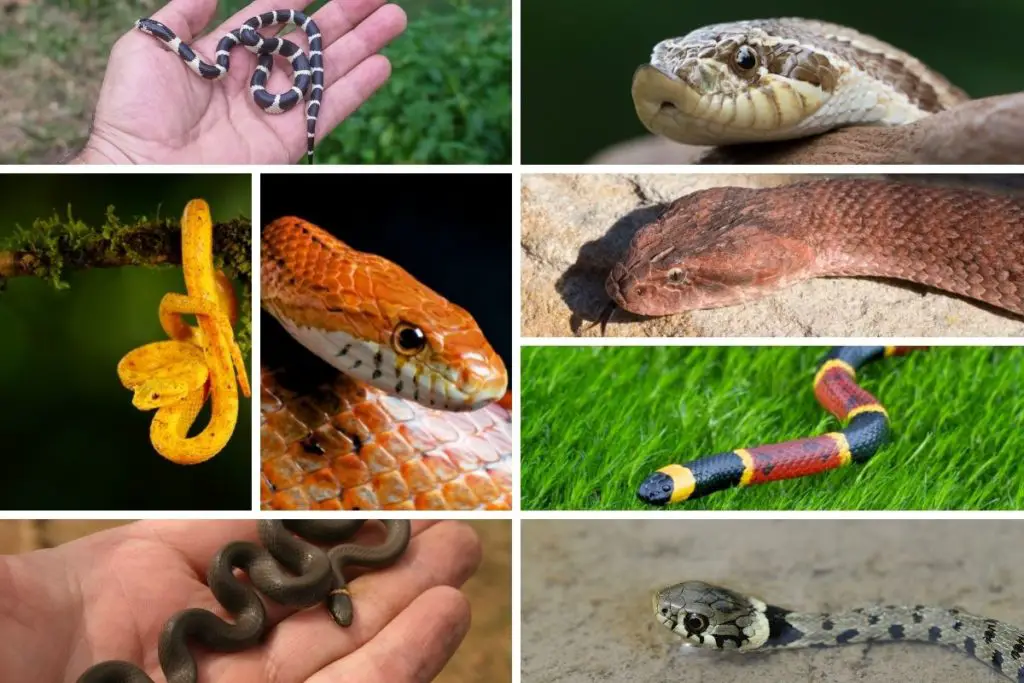
The pros of owning small pet snakes
Although the cost of pet snakes varies based on the species of snake, and you may wind up spending a lot of money on the tiniest of snakes.
However, one thing is for sure: it will save you money on enclosure, decor, and heating elements maintenance. Smaller snakes eat less than bigger ones, so food costs will be lower.
There are other benefits of getting a small snake, too:
No-Risk of Allergies
If you are one of the unlucky people who suffers from pet allergies, a small pet snake may be the perfect pet for you. Many people with pet allergies can tolerate snakes without any reaction since snakes don’t shed any hair or fur.
Easy to Care For
Small snakes are easy to care for and don’t require a lot of time or attention each day. As long as you provide the snake with a food and water dish, a place to hide, and an occasional misting, your snake will be content.
Great for Children
Small pet snakes are ideal for children who want to learn about caring for a pet. Snakes are low-maintenance animals that don’t require a lot of attention, and they are perfect for kids who want to watch a pet move around.
However, you should always supervise your children when they are handling any pet snake, no matter how small it is.
Reduced Risks of Injuries
You should keep in mind that any pet with a mouth and teeth can cause harm. However, tiny snakes are generally passive and unable to inflict significant damage. The most severe case is a benign little love bite.
Because the small snakes’ sizes prevent them from killing people or other animals by constricting, you will not be harmed at any time. Furthermore, when dealing with little snakes, you won’t get a muscle strain as you would if handling a large snake.
Speaking of handling, you can learn if your pet snake likes being held or touched here, where I also discuss how to hold them correctly to avoid getting bitten.
The Cons of Owning Small Pet Snakes
On the other hand, there are a few reasons why you might not want to get a small pet snake:
They Can be Boring
As with all animals, some people may find snakes boring to watch. Since they don’t move around as much as other pets like dogs or cats, some people may lose interest in their pet snake over time.
They Require a Specific Type of Enclosure
Since small pet snakes don’t require as much space as their larger counterparts, you will need to get an enclosure that is specifically designed for them. This can be difficult if you live in an area where these enclosures are not readily available.
You Might Get Bitten
As with any pet, you should never fully trust them and should always understand their actions and behaviors and anticipate how they would react.
Just because they are small doesn’t mean they won’t bite, but thankfully their bites are not going to be as dangerous as the bites of larger snakes, unless they are quite venomous, of course.
Special Care (that can be expensive)
Small snakes will require more specialized diets and care. You’ll need to feed them prey, which may necessitate a frosting game in the refrigerator.
Make sure to never feed your pet snake live mice, though.
They can Disappear
Since they are so small, pet snakes can easily disappear in their cages, or even worse, into the nooks and crannies of your house. This could lead to a lot of hunting on your part if you want to find your pet snake.
You must make sure their enclosure is completely escape-proof, you will be surprised how tightly they can fit into some tiny openings and escape through them.
Conclusion
Snakes are commonly misinterpreted and mistreated by the majority of people, but if given a chance, they may become excellent pet companions.
A tiny pet snake is even better because it will give you a buddy who won’t take up much of your time – all you have to do is maintain them.
Related Questions
What kind of snakes stays small forever?
Some of the smallest pet snakes that also stay snake forever include the Ball python, the Rosy Boa, the Ringneck Snake, the Corn Snake, the Milk Snake, and the California kingsnake, and the Garter snake.
What is the smallest snake to keep?
The smallest pet snake you can keep is a corn snake. Other small snakes you can keep include the Mexican Milk Snake, the Kenyan Sand Boa, the Western Hangose, the Corn Snake, and the African Egg-Eating Snake.
What is the friendliest snake to get?
The friendliest pet snake to get is the Ball Python. Other friendly snakes include the California Kingsnake, the Garter Snake, and the King Snakes.
What are some of the best beginner pet snakes?
Some of the best beginner pet snakes are the garter snake, king snake, corn snake, ball python, and western hognose.
What snake is very small?
The smallest pet snake is the California Kingsnake. Other small snakes include the Garter Snake, King Snakes, and Corn Snake.
How do I hold a pet snake?
To correctly hold your pet snake, you should place one hand behind their head and gently cup their body with the other hand. Be careful not to squeeze them too tightly. You should also avoid contact with their eyes and mouth.
Helpful Resources
Secrets of Snakes: The Science Beyond the Myths by David A. Steen
If you like this article, please share it!

